| April 6, 2011 |
|
Working with Weight Scale: Basic Information and Tenets of the Ton(ne)
Matt Fonseca, UNECE/FAO Forestry and Timber Section,
Geveva Switzerland. Matt gave an overview of the drivers of weight to
volume ratios based on his experience in working with weight in western
North America and in the southeast of the US. He also provided some
information on some of the different add-ons and controls used in
conjunction with weight to minimize risk when weight as used as the
transaction unit. Click
here to view the presentation.
|
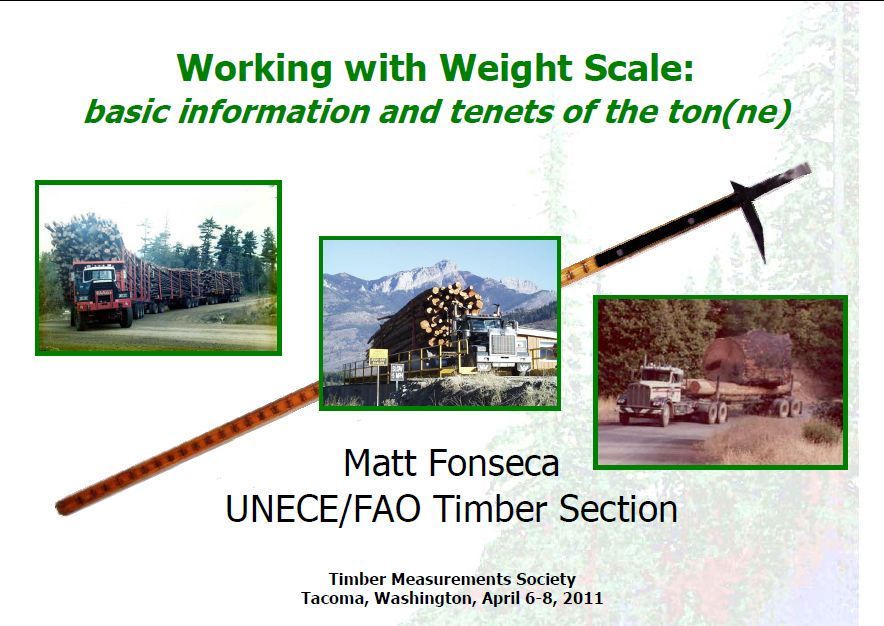
|
|
Transacting Logs by Weight: A Western US Overview
Neal Hart, Jendro
& Hart LLC, Sunriver, Oregon. Neal provided some background on why
the use of weight and cubic is increasing in the Western US. He also
provided some comparisons of weight and volumes in cubic and
Scribner, noting that the relationship between weight and cubic volume
is quite predictable and linear, while the relationship between weight
and Scribner volume is erratic and not very predictable, especially given
the high percentage of small diameter logs that is now common in the
region. In addition, Neal provided some information on relationship
with value and some of the pitfalls when using conversion factors for weight to Scribner volume. Click here to view the
presentation.
|

|
|
Selling Logs By Weight
Pete Van Sickle, Idaho Department of Lands,
Coeur d'Alene, Idaho. Pete gave an overview of the Idaho Department of
Lands timber program as well as their regional scaling load. They have
been gathering weight to volume ratios for some time and now feel
comfortable selling volume on a weight basis. He presented some of the
results of weight to volume analysis that they pointed to their aim of
increasing the number of weight based sales to 80% of their program,
and increasing the component of bigger wood to be included in their
weight sale offers. He did state that large timber (>24" dbh) will
continue to be physically measured. Click here to view the
presentation.
|
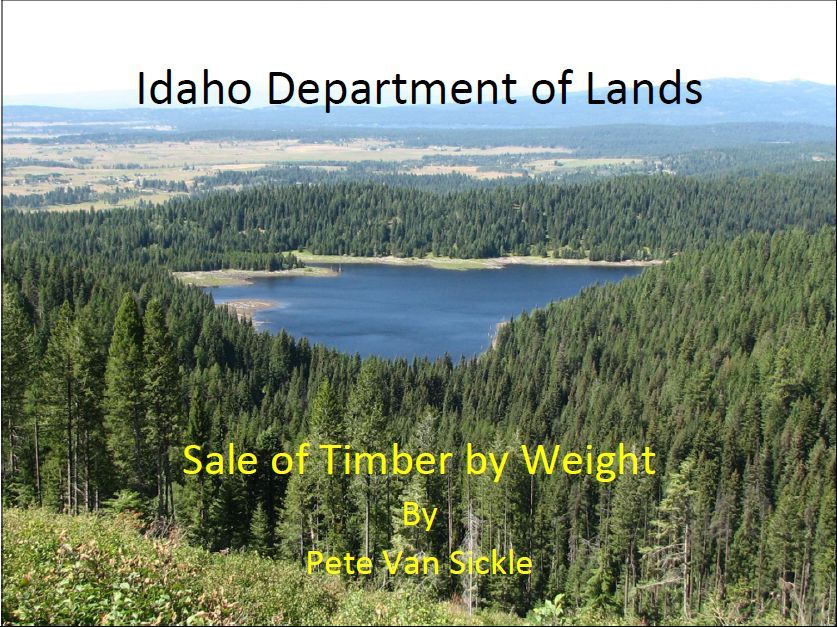
|
|
Buying Logs on Weight
Bill McFarling, Neiman Timber Company,
Spearfish, South Dakota. Bill provided a view at their three sawmill
locations and presented comprehensively, the methods and
processes that Neiman uses for their log purchase and inventory systems
which are entirely based on weight and weight converted volumes. He
also covered some of the challenges that they have had to find
solutions for, as well as the difficult situation that the beetle
killed ponderosa pine is creating. Click here to view the
presentation.
|
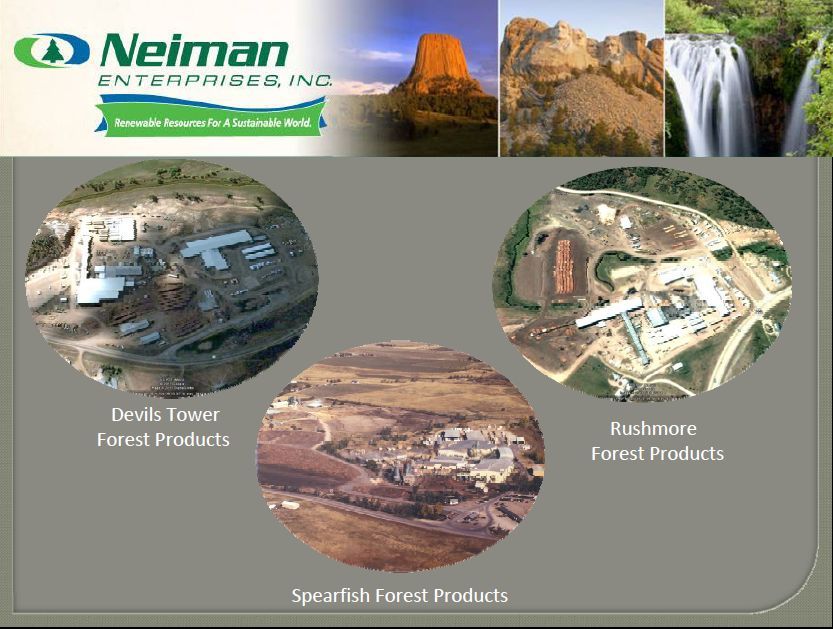
|
|
Global and Regional Forest Products Economic Trends
Delton Alderman, Researcher, USFS Research Station,
Princeton, West Virginia. Delton presented the current economic
climate for forest products globally and provided the, all important to
North American wood manufacturers, situation with housing in North
America and the world. Many questions remain as to how the sluggish
economy in the US, coupled with a huge supply of unsold houses will
affect the industry. He mentioned that one bright spot was demand from
Asia, which is increasing in China, and at least in the short-term will
likely increase in Japan. Click here to view the
presentation. |
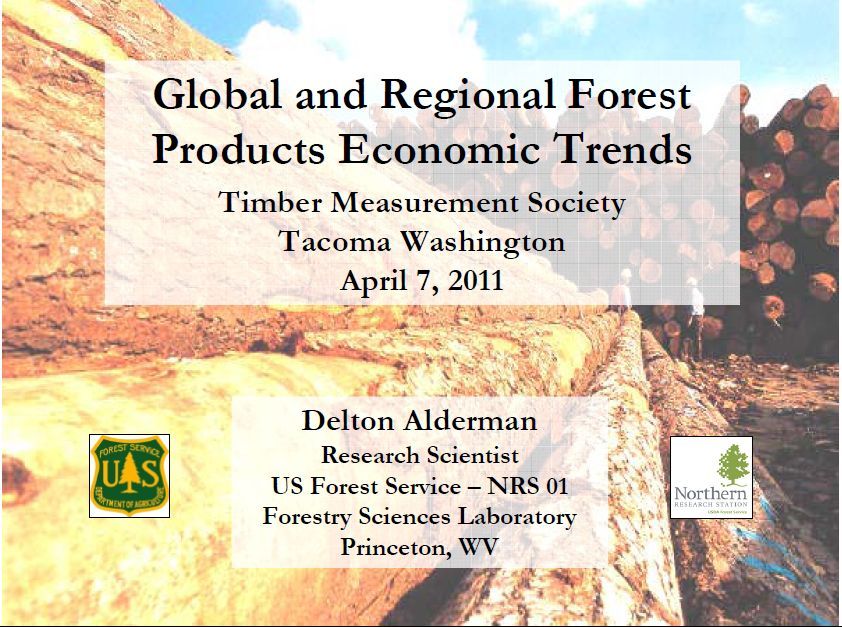
|
|
Measurement and Quality Guidelines for Pole Logs
Tom McKenzie, Bell Pole,
Conway, Washington. Tom covered the technical requirements of logs used
to make poles and provided easy to follow examples of defects that are
allowed and those that are not allowed. In addition he proved data on
converting between BC Firmwood scaled logs in m3 vs. Scribner long log
in both standard (1 in 10) and actual taper. Click here to view the
presentation.
|
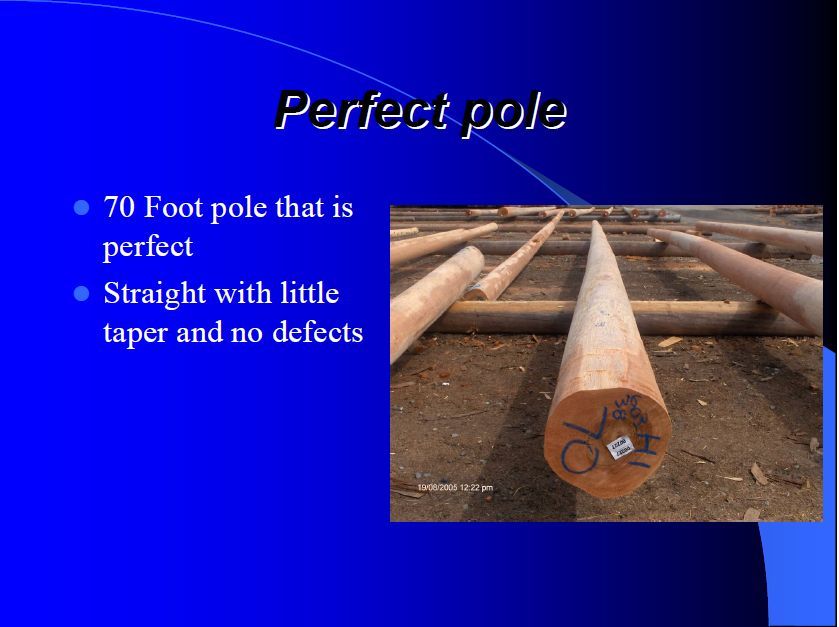
|
|
The Ultimate Timber Cruise Prescription
Jon Aschenbach, Resource Supply LLC,
Beaverton Oregon. Jon presented a cruising process and procedures that
works well when the stakes are high, e.g., high volume and high valued
stands. He outlined some of the procedural differences, such as using
GPS and other technology to improve accuracy and using good logic in
grid layout, and also advocated what might be interpreted as "old
school" approaches toward minimizing the risk of cruising high valued
stands. Click here to view the
presentation.
|
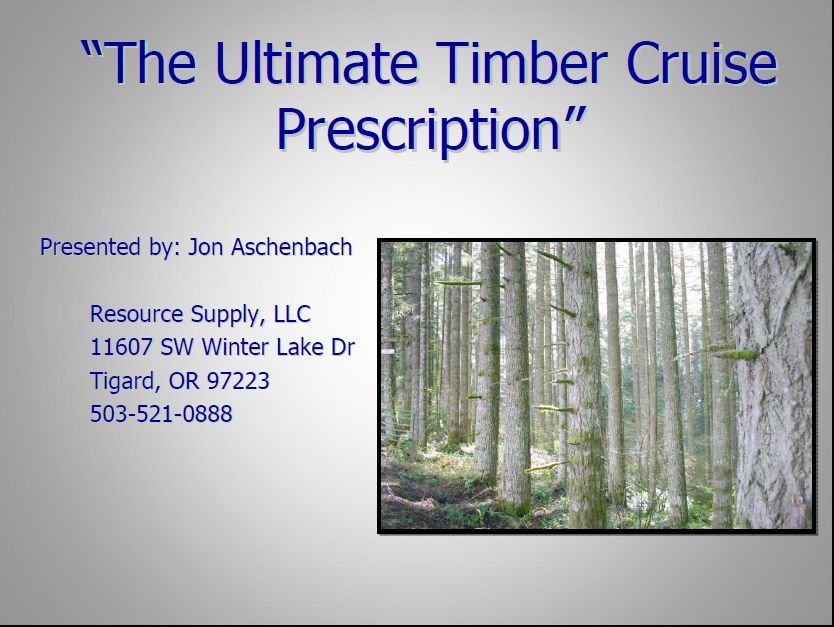
|
|
Simple Sample Log Scaling: Results of a Study Done on Vancouver Island
Peter
Dyson, Researcher, FPInnovations-Forest Operations, Vancouver, British Columba. Peter gave the
background and results of a study that he worked on in the
Vancouver Island region of British Columbia. In many parts of BC, log
transport is done via water transport, with temporary landings used to
handle, scale and place logs into rafts. As a result of the remote and
temporary location, it is often not feasible to install certified
weight scales. The aim of the
study was to assess the accuracy of sample scaling without the
benefit of log weights to extrapolate load volume to the non-sampled
population, but rather use truck load average to extrapolate. The
results were very interesting. Click here to view the
presentation.
|
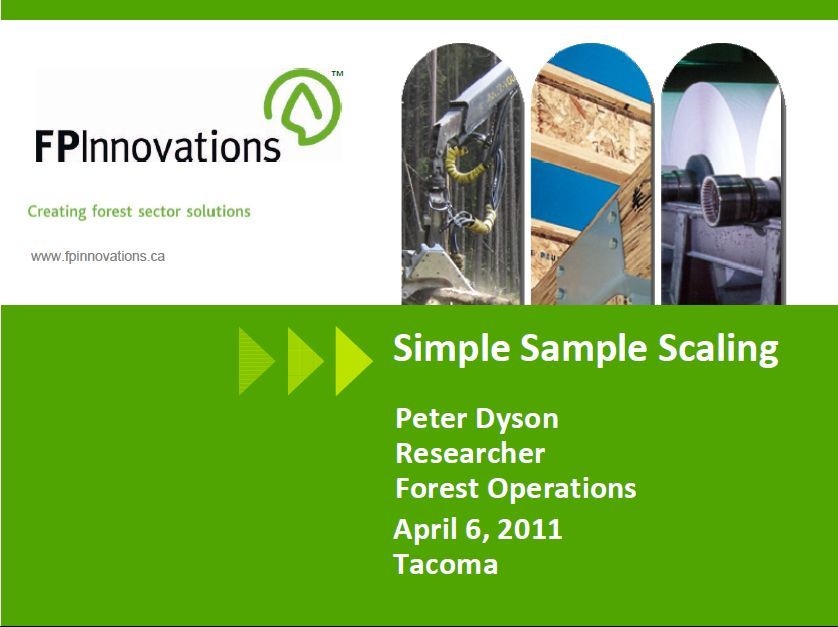
|
|
Log Freshness: an Overview of Log Shelf-life Related Quality Issues, their Timing and Prevention
Don Gsell, Weyerhaeuser,
Vancouver, Washington.
Don provided a background on the pathogens and wood properties
issues that affect log grade, and thus sales realization, in the
Pacific Northwest region. He provided some good practices to minimize
preventable degrade as well as shared information on just how much
value can be lost when one does not follow best practices. Click here to view the
presentation. |
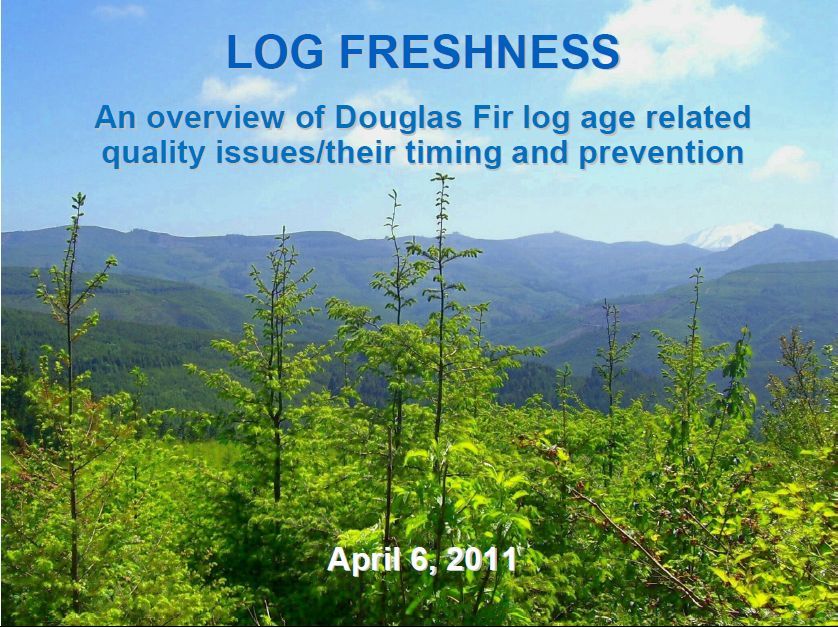 |
|
Voice Recognition: Application for Hands-free Log Scaling, Chain Talley and End Talley
Barry Hodgkin, President, Simply Computing International,
Maineville, Ohio.
Barry demonstrated the use of voice data collection for log
scaling. The system uses voice command technology to record log scaling
information and generates scale data and reports in real-time via
software/hardware systems that they put together for their clients.
Advantages include: fewer errors (no more key-punching), the use of
both hands, the scaler can keep his eyes on the logs rather than
needing to view a hand-held screen, and for those working in very cold
conditions - the ability to cover hands in heavy gloves or mittens. The
system also records data quickly and works even where there is
substantial background noise. This system is also used for lumber
grading and tallying, and a timber cruising application is currently
under development. Click here to learn more about this system and the products and services offered. |
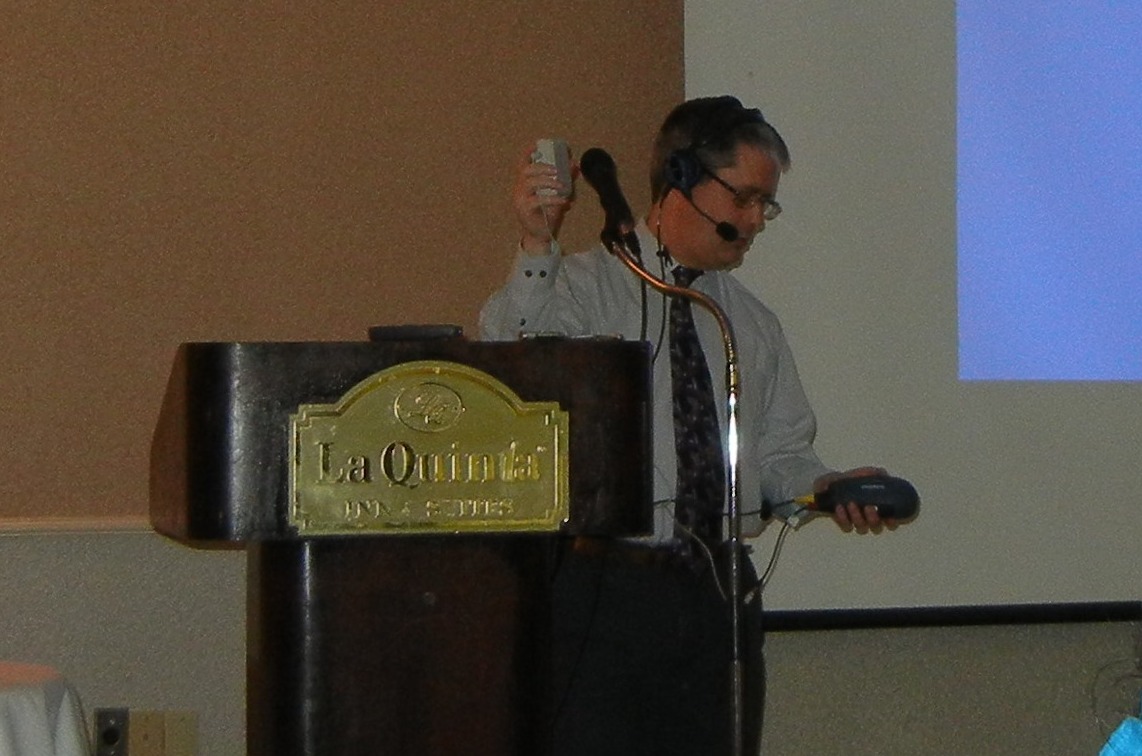
|
|
Eastern
Perspectives - the US Northeast Timber Trade: Rules, Misrules,
Conversions, and the 12,000 mile Journey from New England to the Far
East
Hal Wilkins, Van Mohl & Ohnemus GmbH,
Westminster Station, Vermont. Hal presented his experiences and view on
the Northeastern US log market in terms of trade flows. He mentioned
that the region has been a significant log exporting region for some
time now. Despite years of experience, converting between units of
measure has been an ongoing frustration for Hal and his colleagues in
the log trade business. Hal presented the traditional units of measure
of the Northeast and some of the obstacles that he has faced by buying
and selling based on different log scaling methods. Click here to view the
presentation. |
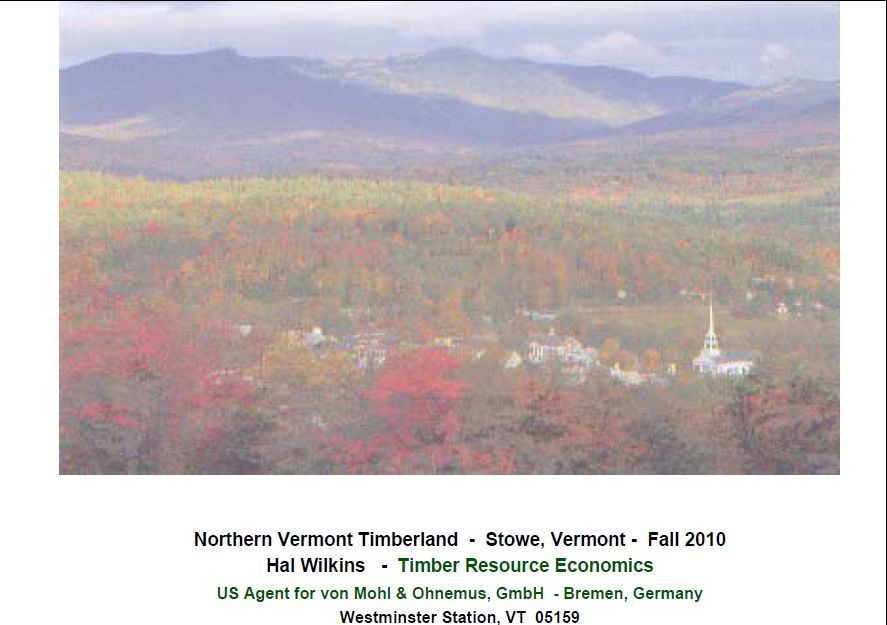 |
|
Measuring Stock-pile Volumes: How to Accurately Assess Volumes of Chips, Residue and Biomass
Jason Martin, Atterbury Consultants,
Beaverton, Oregon. Jason presented a simple, accurate and fast
way of assessing stockpile volumes using MapSmart and a pulse laser
positioning system. The survey and assessment can be done with one
person and conducted on days when aerial assessment would not be
possible. The cost of the equipment is reasonable and the processing
time to input data into MapSmart to calculate volume is minimal (hours)
when compared to other methods. In addition, the system is safe (does
not require the surveyor to climb piles or position themselves in the
path of heavy equipment. Click here to view the presentation. |
 |
| April 7, 2011 |
|
New
Method of Cubic Scaling in New Zealand to Replace the JAS Method and
Work on the New Version of New Zealand's Log Scaling Manual
John
Ellis, Group Technical Manager, C3 Ltd.;
and Managing Director of
Scaling
Research International, Mount Maunganui, New Zealand. John has
been working on a new method of scaling logs in New Zealand that
replaces the Japanese Agricultural Standard (JAS) that has been
traditionally used for export logs. While it is often accepted to
purchase logs using the unit of measure from the point of origin of the
logs, the 3-D method, which is traditionally used to ascertain actual
volumes in New Zealand, is not as practical as JAS for use in export as
it requires a large-end diameter (complicated as export logs are
normally scaled on the truck). The 2-D method (derived from the 3-D formula) has shown to assess
volumes accurately and does not have the inherent inaccuracies of the
JAS method, thus reconciling standing inventory does not require
complicated conversion factors. The switch to 2-D will also be
more compatible with other international and automated methods of
assessing diameter and volume. There is still some work to be done on
assessing conversion to Guo Biao (GB) method used in China and
publishing a refereed paper on the method.
John also covered the work that is currently underway to update the New Zealand Procedures for the Measurement of Roundwood,
which was last revised in 1994. The new manual relies heavily on visual
examples to convey procedures rather than text and covers:
measurement procedures and checks, how to measure diameters, length
measurement, methods of estimating wood within log, measurement of log
quality, check scaling, conversion between systems, and formulae and
tables. The section on conversion between systems will have data on
converting between: weight to volume, JAS to cubic, Scribner to cubic,
Huber to cubic, Brereton to cubic and hopefully Guo Biao. John will
keep us abreast of the release and availability of both the paper on
2-D and the revised scaling standards publication.
|
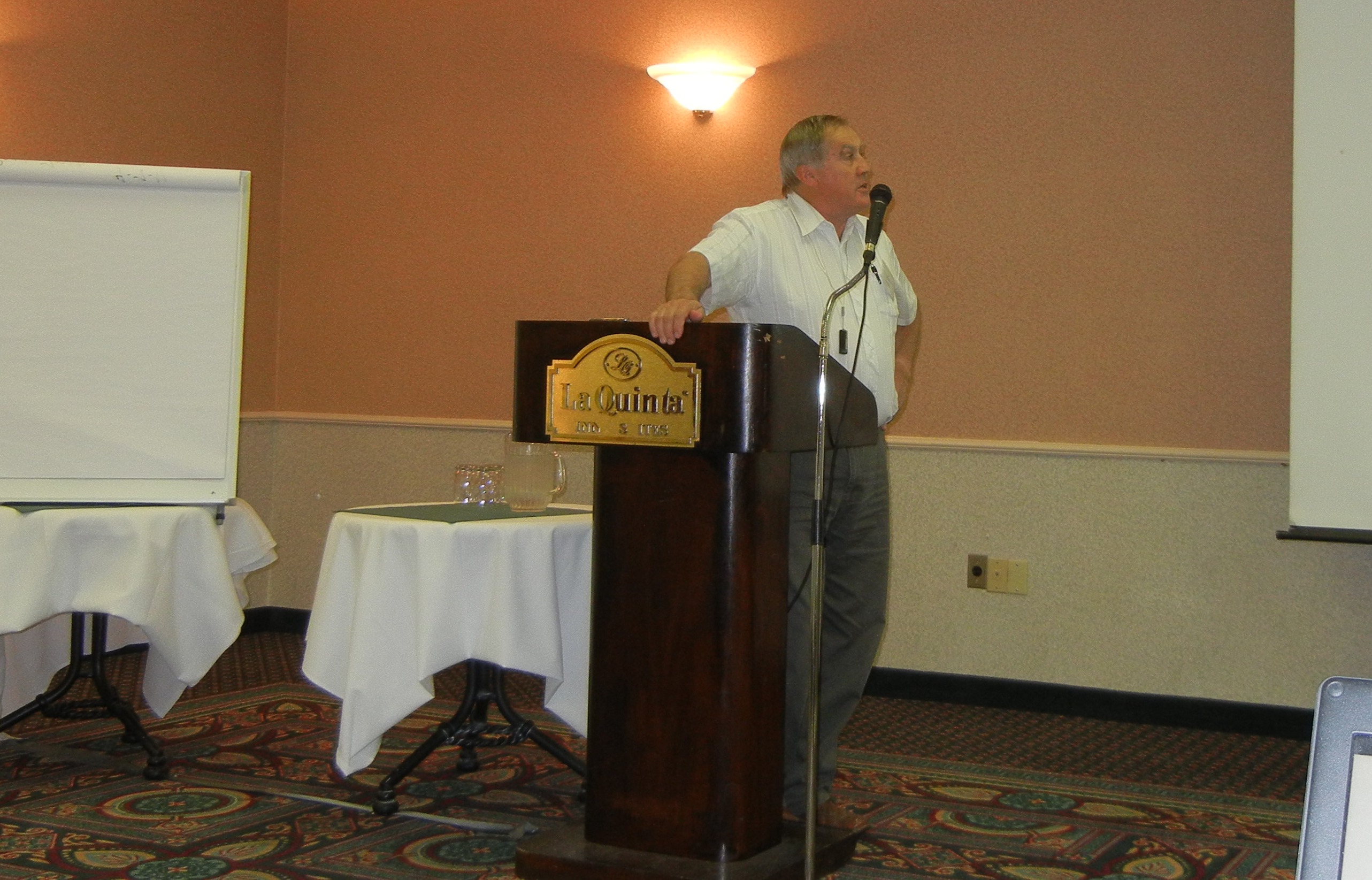
|
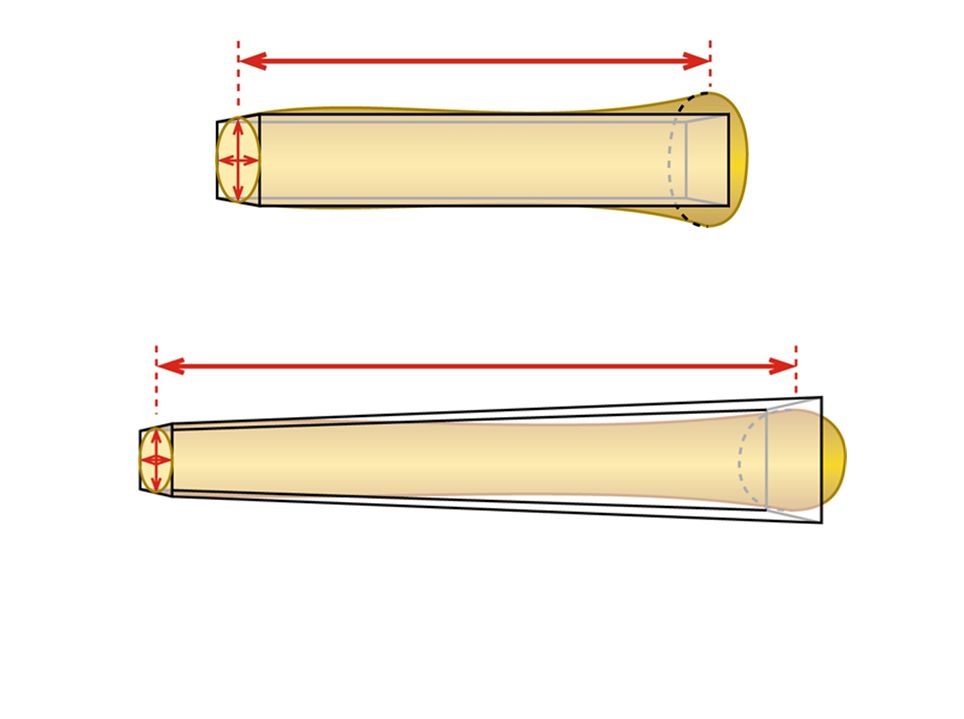 |
|
Bark Volume: Assessing Bark as a Fuel for Biomass Energy
Roy Anderson,
Senior Consultant, Beck Group,
Portland Oregon.
Roy gave a brief description of the services that the Beck
Group provides, such as planning, consulting and benchmarking for the
forest products industry and then focused on the current work that he
has done on assessing bark availability for biomass energy. Recently,
with the sudden increase in interest for carbon neutral energy;
biomass, or in this case residue bark from mills, has suddenly
become a valued commodity whereas before it had minimal value. As a
result, there is a demand for data on bark yield in order to conduct
feasibility studies on possible biomass plants. Roy shared some of the
information that they were able to determine and find, as well as their
approach to analysis. Click here to view the
presentation. |

|
|
Terrestrial LIDAR for Forest Measurement and Monitoring
Glen Murphy, Oregon State University,
Corvallis, Oregon.
Glen presented an inventory system that he has been testing,
which is based on terrestrial light detecting and ranging (LIDAR) which
can take accurate measurements. The scanner is mounted on a tripod
and scans 360 degrees (hemispherically), measures millions of points
per second and can scan out in a 30 meter radius. The result is
an accurate set of measurements; not only for establishing size
and volume, but also other grade related criteria, such us crook and
sweep, taper, knot size and number. Click here to view the
presentation. |

|
|
Aerial LIDAR for Forest Inventory
Steve Reutebuch,
USDA Forest Service, PNW Research Station, Cooperative for
Forest-Systems Engineering, University of Washington, Seattle,
Washington. Steve introduced the various types of LIDAR
(terrestrial, satellite, aerial), but focused on aerial LIDAR, with
it's application for measuring forest canopy as the main focus. He gave
an example of satellite being used at a high level, with sub-sampling
done via aerial LIDAR and ground plots to fill in the blanks. LIDAR can
make fairly accurate height measurements, however, it has limitations
in accuracy and because it cannot determine species, among other
things. Click here to view the
presentation. |
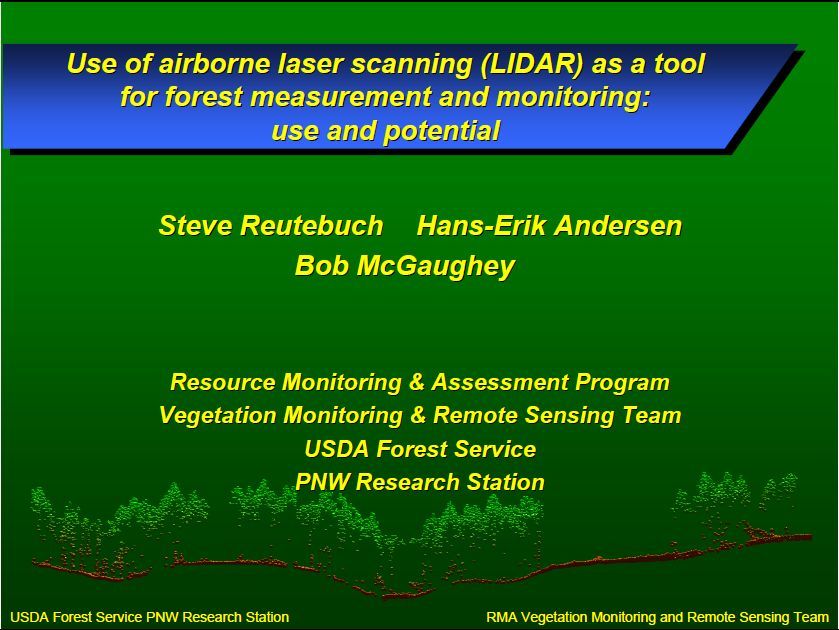 |
|
Sampling- the Black Hole in Fibre Measurement and Quality Management Processes
Murray Hall, Murray Hall Consulting Ltd.,
Duncan, British Columbia. Murray gave a presentation based on his
experience in reviewing procedures for sampling wood fibre to
determine bone-dry weight. In the scope of the entire assessment of raw
materials delivered, this aspect has far more potential than any other
for error and bias. Murray outlined what best practices are, based on
his experience and research, and gave some examples of what would
appear to be small errors that lead to huge mis-payments. Click here to view the
presentation. |

|
|
Status of the National Biomass Estimator Library
Troy D. Heithecker, USFS Forest Management Service Center,
Fort Collins, CO. Troy covered the past present and future work
that is being done in developing tools for assessing biomass, which
includes methodology (biomass equations, weight volume ratios, dry
weight equivalents, etc.), and software tools (which are all available
absolutely free). To view the
presentation Click here, and here to go to the Biomass Estimator Library. |
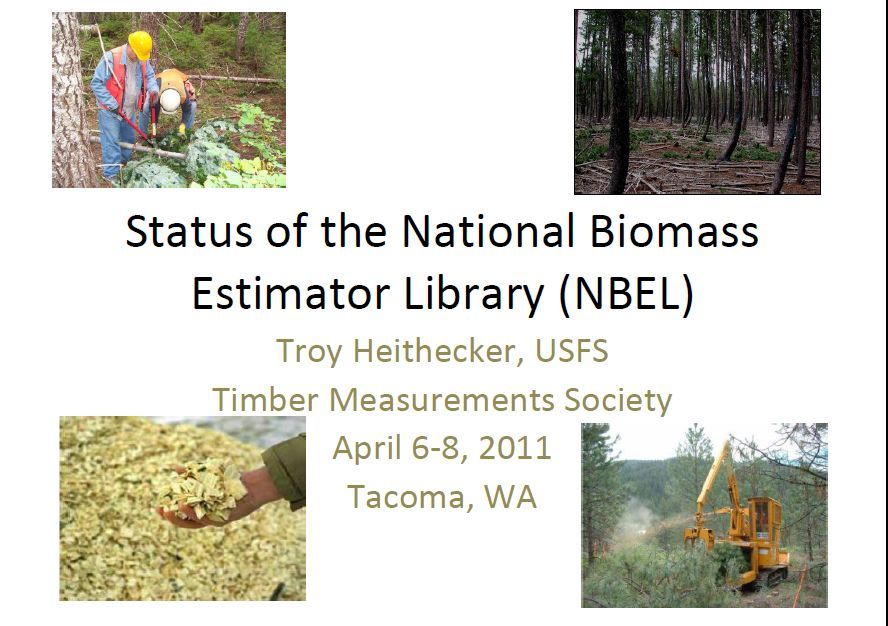
|
|
Setting the Confidence Interval around the Total Inventory Estimate for a Stand-based Inventory
Steve Fairweather, Mason, Bruce & Girard,
Portland, Oregon. Steve presented the use of simulation to determine a
confidence interval on stands that have had inventory assessed via
different methods, which precludes the
use of traditional formulas. In addition, one can use
simulation to answer many questions about inventory procedures and
make-up. Click here to view the
presentation. |
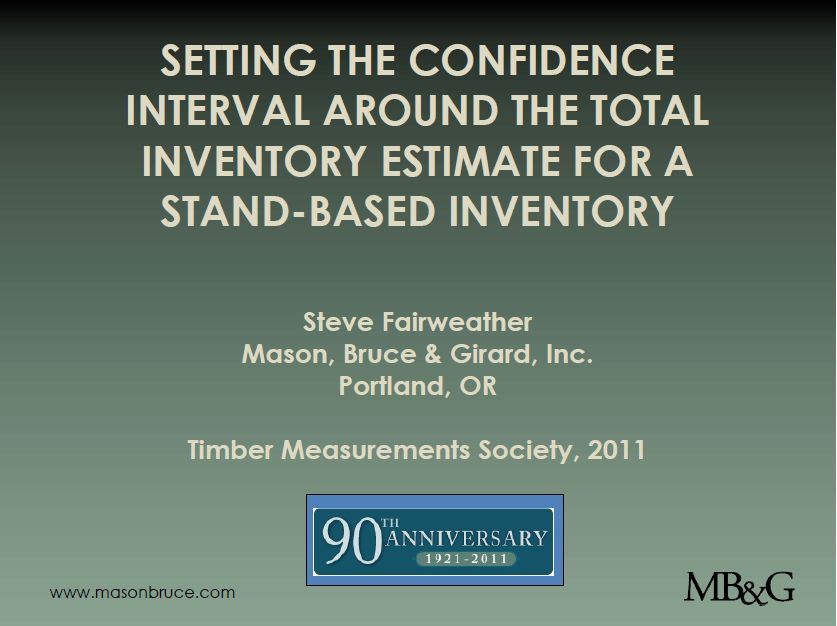
|
|
Log Yard Inventory Measurements: 2011 Update
John Calkins, Simpson Lumber Company,
Shelton, Washington. John gave an update on what he has learned while
working on improving the physical log yard inventory methods and
outlined the technology that he has utilized. The TruPulse 360 forms
the backbone of John's system, but additionally, John has been working
with others in developing systems and software to make log yard
inventory, simple, fast, accurate and repeatable. Click here to
view the presentation. |
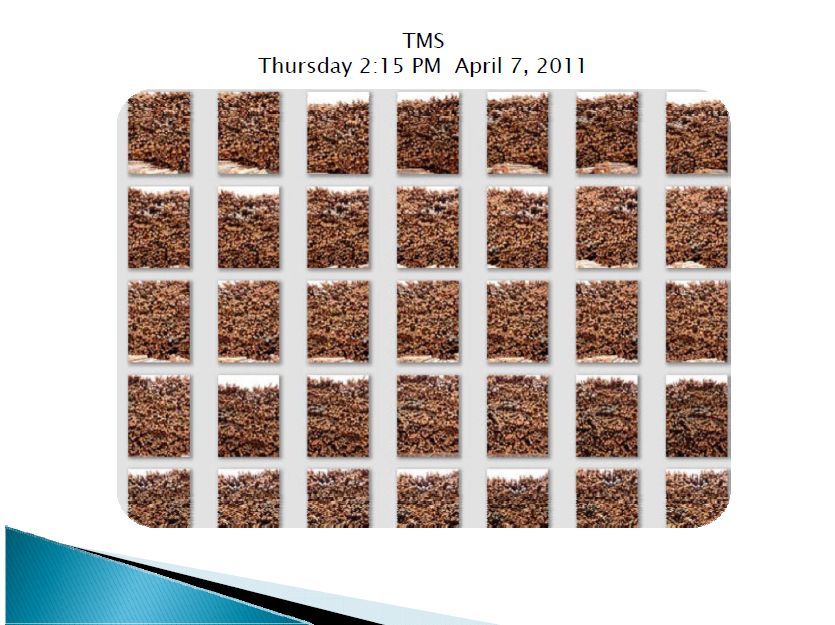
|
|
Lodgepole Pine Epidemic: Utilization and Scaling
Ernie Bauer, Executive Director, Idaho Board of Scaling Practices, Coeur d'Alene, Idaho. Ernie
provided background on the mountain pine beetle epidemic and the
challenges faced in determining how best to utilize dead lodgepole pine
(LPP), given the time since the tree was girdled by the beetle.
Additionally, Ernie covered the various approaches used for scaling
LPP, including west and east-side Scribner, BC Firmwood, and USFS
Cubic. Click here to view the
presentation. |
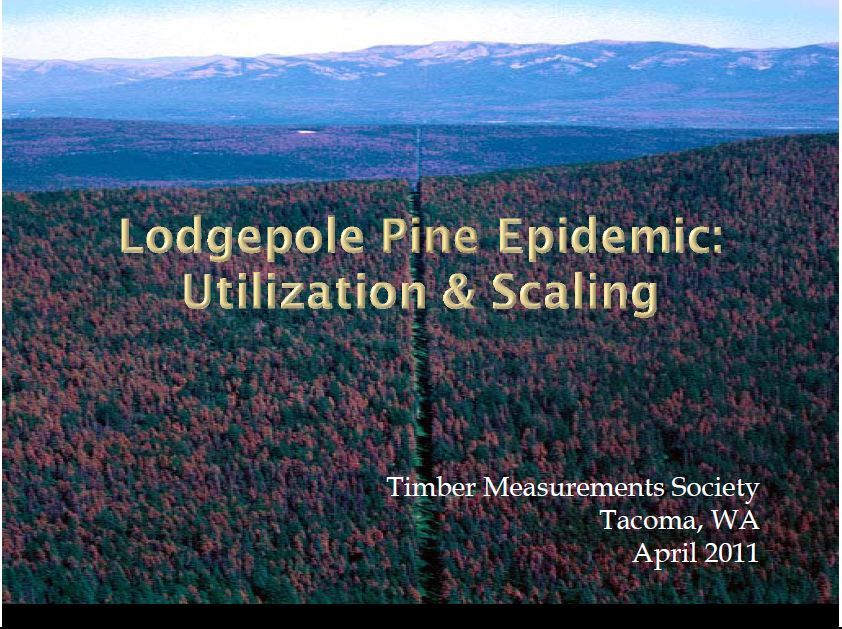
|
|
Update on Logmeter, Drive-through Log Scanning
Mario Angel, WoodTech
- North America, Portland, Oregon. Mario provided background on the
WoodTech company, which is based in Chile, as well as installations in
the US and worldwide. He showed the comparative advantages of
their scanners, which measure load volumes in real time, when a truck
drives through their scanning arch. The scanners can
differentiate logs and chips from the truck and trailer and even
measure attributes such as log diameter length and imperfections such
as crookedness. They are currently working on using cameras on the ends
of the loads, which will increase scanner sensitivity further. Click here to view the presentation. View a
short video on the
Logmeter 4000. |

|
|
Eastern Washington Standard Taper Issues
Russ Carrier, Boise Cascade, Kettle Falls, Washington.
Russ discussed the situation in Northeast Washington whereby they are
part of USFS Region 6 and thus share the Region 6 standard taper rules
for butt-cut logs, however, their "sourcing area" is shared by mills
from Idaho (Region 1), with very different standard taper rules, thus
generally lower volumes. Russ went on to cover the various different
scenarios of point of origin vs. point of scaling regulations as well
as the often conflicting agency regulations in this area of region
6. Click here to view the
presentation. |

|
| April 8, 2011 |
On
April 9,
we had a field trip to the Simpson mill in Tacoma. Most took a
tour of the mill and participated in a comparison scale on seven group
of logs. The logs included mix of typical Douglas fir and
western
hemlock logs that are used at this mill, however, there were a few
other species as well. The volumes for the loads, using various
scaling methods (average of group), were as follows:
| |
Log dimensions NWLRAG long log* |
Log
dimensions BC |
Scribner board foot
(revised) |
NWLRAG (bureau) cubic foot |
USFS cubic foot |
BC cubic metre |
JAS |
| Load |
Ln' |
d1" |
d2" |
Ln
m |
d1
rads |
d2 rads |
long log gross bf |
long
log net bf |
short
log gross bf |
short
log net bf |
gross ft3 |
firm
ft3 |
net ft3 |
gross ft3 |
net ft3 |
firm m3 |
firm m3 |
| 1 |
31.7 |
8.3 |
11.9 |
10.0 |
11.5 |
15.9 |
3,840 |
3,237 |
5,340 |
4,760 |
1,000 |
985 |
893 |
970 |
892 |
28.75 |
|
| 2 |
40.0 |
11.2 |
14.4 |
12.5 |
15.0 |
19.2 |
4,070 |
4,060 |
5,090 |
5,060 |
908 |
908 |
905 |
873 |
869 |
25.99 |
|
| 3 |
38.9 |
9.8 |
13.6 |
12.2 |
13.2 |
17.8 |
3,613 |
3,477 |
4,680 |
4,390 |
894 |
894 |
862 |
839 |
789 |
25.10 |
|
| 4 |
20.8 |
12.1 |
14.6 |
6.7 |
16.2 |
19.5 |
1,483 |
1,380 |
1,750 |
1,660 |
311 |
311 |
287 |
274 |
260 |
9.03 |
8.67 |
| 5 |
39.4 |
10.5 |
14.3 |
12.4 |
14.1 |
19.0 |
3,483 |
2,637 |
4,510 |
3,370 |
850 |
850 |
604 |
820 |
601 |
24.30 |
24.42 |
| 6 |
35.7 |
9.2 |
12.5 |
11.2 |
12.4 |
16.4 |
3,723 |
3,620 |
4,650 |
4,490 |
925 |
925 |
900 |
883 |
858 |
25.71 |
27.34 |
| 7 |
39.7 |
14.0 |
18.7 |
12.4 |
18.7 |
24.7 |
883 |
717 |
1,150 |
1,000 |
195 |
195 |
164 |
202 |
135 |
5.62 |
5.97 |
| Total |
35.1 |
9.8 |
13.3 |
11.0 |
13.3 |
17.6 |
21,097 |
19,127 |
27,170 |
24,730 |
5,083 |
5,068 |
4,615 |
4,861 |
4,403 |
144.51 |
|
Note:
*Average log diameters for short log Scribner and USFS cubic will be
theoritcally 0.5" larger as a result of truncating each
diameter for long log Scribner.
The following is a brief summary of the some of the key findings when analyzing the log data gathered:
1. For all practical purposes, the NWLRAG cubic scale provided exactly
the same volume as B.C. Firmwood when divided by the 35.315 constant
for ft3 to m3.
2. USFS Cubic gross volume
was generally 95% of BC and NWLRAG cubic, with half the difference from
diameter rounding rules and the other half from unmeasured trim
allowance. The net volume ratio was 1 m3 BC = 0.863 m3 of USFS cubic
(using the 35.315 constant) for this group of logs.
3. Japanese Agricultural Standard scale (JAS) was about 2.7% higher than BC or NWLRAG for the 66 m3 that was compared.
4. One can closely approximate diameters measured in BC rads to inches
in diameters measured by the Sribner methods by dividing
the rads by 1.33 for long log Scribner and 1.28 for short log Scribner.
5. BC m3 to MBF: long log gross = 6.85, net = 7.56; short log gross = 5.32, net = 5.84
6 Long log (west-side) to short log (east-side) Scribner = .777 gross, .773 net.
Thanks to all who participated in scaling the logs. This is very useful information.
After the field trip, the meeting was adjourned at about 2:30 PM.
|
|























